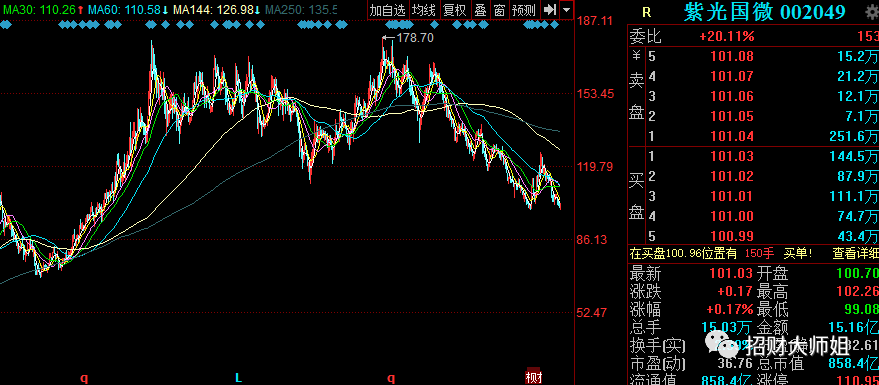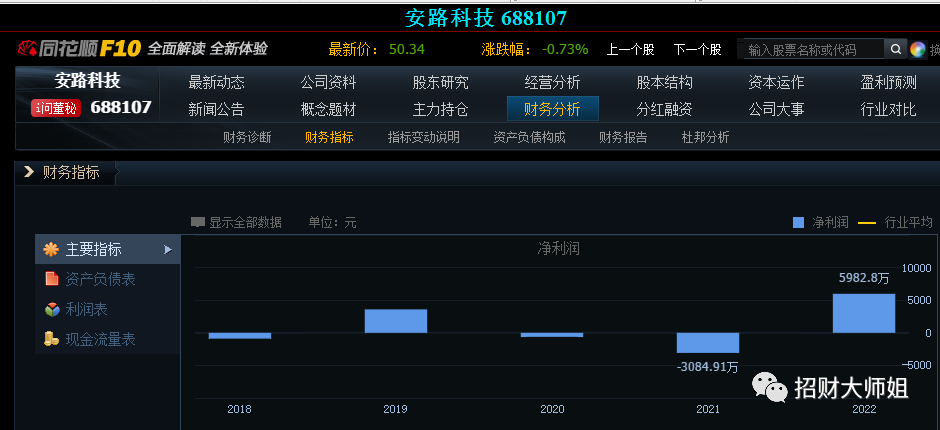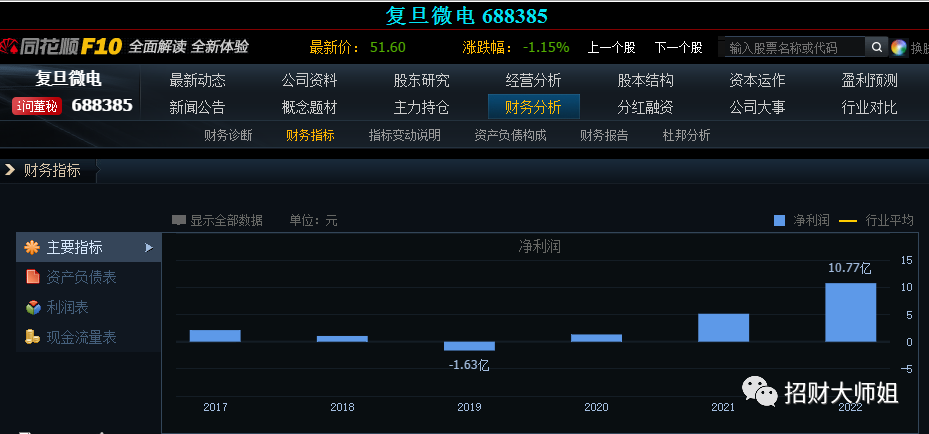Today, we continue to delve deeply into the semiconductor industry and related companies.
To begin with: For those looking to invest in semiconductors at a low point, please be patient a little longer. I still believe we need to wait. Yesterday, my senior sister mentioned that while the space for decline is sufficient, the time is not enough. What I am waiting for is time, not space.
FPGA chips are a branch of digital chips, differing from CPUs/GPUs in that: CPUs/GPUs have fixed functions, while FPGAs can be configured to provide specific functions based on user needs after manufacturing.
The full name of FPGA is Field Programmable Gate Array, which translates to 现场可编程门阵列 in Chinese. Its characteristic lies in the term ‘programmable’, meaning it can be configured to provide specific functions through EDA software according to user requirements.
The industry growth rate of FPGAs: From 2020 to 2026, the global FPGA market size is expected to grow from $5.585 billion to $9.69 billion, with an average annual compound growth rate of 9.6%. The FPGA market size in China is expected to grow from 17.6 billion to 33.2 billion, with an average annual growth rate of 17%, significantly higher than the global rate.
From the perspective of downstream markets, FPGA chips are involved in fields such as communications, industrial applications, military aerospace, and automotive, with communications accounting for the highest proportion, but a significant portion is also used in military aerospace.
It is precisely because a large portion of FPGA chips is used in military applications that my senior sister finds it challenging to track them, which is also the reason why she does not include FPGA chips in her investment pool. However, this chip is also a crucial component of semiconductors, so today she chooses to analyze it in detail but temporarily does not include it in her pool. Please understand it from this perspective.
Tracking military-grade FPGA chips is indeed more challenging than tracking chips aimed at consumer and industrial markets. It is even more difficult than tracking new energy IGBT chips. Military applications are not consumer-facing, and many industries have inherent untouchability. Many chips need to align with industry cycles; if the industry to which the chip belongs is in a prosperous cycle, the corresponding upstream chip industry chain will perform well, and stock prices will be strong. Conversely, if the industry is in a downturn, the corresponding chip companies will also struggle.
In terms of potential: Regarding the domestic replacement of FPGAs, domestic FPGA manufacturers have a significant gap in product richness and technical strength compared to leading international companies. Whether for national security considerations or the highly autonomous special military market, the growth space for domestic FPGA manufacturers is vast.
The three FPGA companies are: Unisoc, Anlu Technology, and Fudan Microelectronics.
1. Unisoc: FPGA + Computing Power + Artificial Intelligence.
Unisoc’s FPGA products can be used in the field of artificial intelligence, providing corresponding computing power support. Its subsidiary, Unisoc Tongchuang, is a leading domestic FPGA manufacturer. The company has a comprehensive product layout in military chips and controls the channels, making it the largest supplier of domestic military chips.
Regarding Unisoc’s stock price, many people are dissatisfied. Let me explain: when I established my semiconductor investment pool last year, I did not include Unisoc because last summer, Unisoc was near its historical high, with its highest price in August last year being around 170! Many people bought Unisoc near its historical high last year, and I also do not understand why. The semiconductor stocks I included last year, such as Northern Huachuang, Weir Shares, Shengbang Shares, and Zhongwei Company, were all companies that had already halved in value. Since last year was a historically low period for semiconductors, the stock prices should also reflect a downward trend after halving. Northern Huachuang and other semiconductor companies had their stock prices at historical lows last summer, but Unisoc was at a historical high. What gives? So I did not include Unisoc.

Therefore, it is entirely normal for Unisoc to continue to decline! All semiconductors have halved, and it is unreasonable for Unisoc not to have halved! However, it is currently at 100, and its historical high is 170, so it still hasn’t halved!
My senior sister believes that Unisoc’s strong stock price last year should be related to the strong military industry cycle at that time. From the overall trend of semiconductors over the past year, Unisoc must also experience a halving. After the halving, if the military industry shows an upward turning point, Unisoc may re-enter a new upward cycle. Interested friends can wait a few more months or half a year to see! But one thing is certain: to do well with Unisoc, one must have a deep understanding of the military industry and understand the industry cycle to succeed with Unisoc!
My senior sister is clear: I personally will not include Unisoc in my pool for now, as I currently do not have the capability to thoroughly research the military industry. Those who have the ability can study it more! If in the future I can understand the military industry and feel that Unisoc has reached a bottom area, I may include it, and I will clarify it at that time!
In terms of valuation: Unisoc currently has a PE ratio of 31, which is low in absolute terms. However, given Unisoc’s current downward trend, the undervalued area can be compressed to below a PE of 25.
2. Anlu Technology: FPGA Chips + EDA Software.
My interest in Anlu Technology was piqued mainly because my senior sister researched the large fund over the past weekend, which recently invested in Anlu Technology. Anlu Technology is a leader in domestic FPGAs, mainly engaged in the research, design, and sales of FPGA chips and dedicated EDA software. The company’s products are mainly applied in industrial control, network communication, consumer electronics, and data centers. The product line covers high-performance PHOENIX, high-efficiency EAGLE, and low-power ELF FPGA products, along with supporting EDA software. In the first quarter of 2022, they launched the low-power SWIFT1 series products aimed at industrial and video interfaces.
Currently, Anlu Technology’s performance is not stable enough; it earned profits one year and saw a significant decline the next year, and its performance has not yet stabilized. The large fund likely wants to position itself early, but from my senior sister’s perspective, it does not yet meet the minimum conditions for investment. Many newly listed semiconductor companies have had outstanding performances in recent years, such as Tuojing Technology and Huada Jiutian, which had impressive results before going public. Such new stocks are worth participating in, but Anlu Technology is still a wait-and-see; I will wait until its performance stabilizes before considering it.

3. Fudan Microelectronics: FPGA Chips + Collaboration with NVIDIA + MCU Chips.
The company’s main products include security and identification chips, non-volatile memory, smart meter chips, FPGA chips, and integrated circuit testing services. The company has achieved significant results in various fields and has received wide recognition in the industry, having won first and second-class awards for technological progress at the provincial and ministerial levels.
Fudan Microelectronics’ performance over the past few years:

However, Fudan Microelectronics’ performance in the first quarter of this year was poor; the semiconductor industry generally performed poorly in the first quarter, with all showing net declines.
Nevertheless, Fudan Microelectronics is on the Sci-Tech Innovation Board, and its product range is rich. Perhaps my senior sister will include it in her pool in the future; I will keep an eye on its valuation, which is currently at a PE of 40, a bit high. If it approaches a PE of 30, I may consider including it.
These are the three FPGA companies. After analyzing, my senior sister feels that compared to the previously discussed equipment groups, wafer manufacturing, CPU/GPUs, and advanced packaging chiplets, they are significantly inferior. FPGA chips should only be regarded as knowledge reserves; it is sufficient to know which companies exist and how they operate when the market heats up. Everyone should focus their funds on the companies analyzed earlier, concentrating on leading and excellent companies.